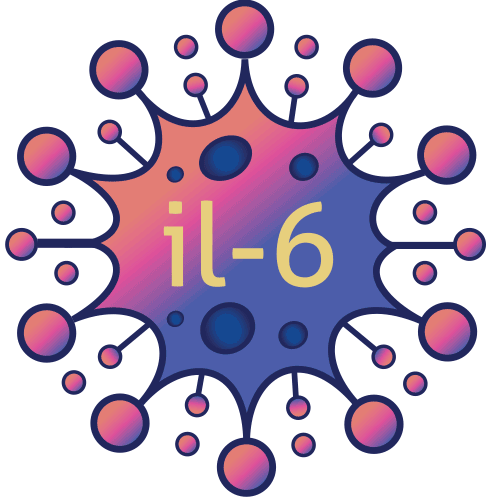Why Is IL-6 Virtually Unknown to the Public?
- From The Mind of AI
- Nov 17, 2024
- 3 min read
Updated: Nov 23, 2024

1. Complexity of Medical Science and Public Understanding
Scientific Complexity: IL-6 is a cytokine, which is a specialized term within immunology that most people outside the medical field may not be familiar with. Unlike terms like “cholesterol” or “blood pressure,” which have been popularized over time, cytokines are complex, and their functions are not easy to explain in simple terms.
Indirect Effects: IL-6 contributes to a wide variety of conditions (from mental health issues to cancer and cardiovascular diseases), but it is often just one of many factors involved. This makes it harder for the public to grasp its importance compared to more direct risk factors like smoking or obesity.
2. Focus on Diseases Rather Than Underlying Mechanisms
Disease-Specific Focus: Healthcare communication often focuses on specific diseases (like rheumatoid arthritis, heart disease, or depression) rather than underlying mechanisms like IL-6 and inflammation. Many public health campaigns address the symptoms and risk factors of these conditions, rather than educating people on inflammatory pathways like IL-6.
Lack of Targeted IL-6 Messaging: Although IL-6 plays a role in many diseases, it’s not directly discussed in most disease management programs or public health materials. For example, campaigns for heart health focus on cholesterol and blood pressure, while mental health campaigns focus on neurotransmitters or trauma—despite IL-6’s significant role in both.
3. Limited Consumer-Friendly Testing and Treatment
Lack of Routine Testing: Unlike cholesterol levels or blood pressure, IL-6 is not something you get routinely tested for in a general health check-up. IL-6 testing is typically reserved for research or severe inflammatory conditions, meaning most people are unaware of their IL-6 levels and their potential implications.
Limited Direct Treatments: While there are treatments that indirectly reduce IL-6 (like anti-inflammatory diets or medications), very few therapies target IL-6 specifically outside of serious autoimmune conditions or cytokine storms in infections. This means the focus is often on treating the disease symptoms rather than the IL-6 itself.
4. Medical Research is Still Evolving
Emerging Area of Study: While IL-6’s role in inflammation has been studied for years, it’s only in recent decades that researchers have started to fully understand the cytokine’s widespread impact on various diseases. Knowledge about IL-6 and its connections to both physical and mental health is growing, but it takes time for these findings to trickle down into public awareness and routine medical care.
Changing Medical Paradigms: The concept that systemic inflammation and immune dysregulation are root causes of chronic disease is relatively new. Traditional approaches have often treated symptoms rather than underlying inflammatory mechanisms, but this perspective is beginning to change with more focus on holistic and preventive health.
5. Lack of Public Health Campaigns on Inflammation
No Major Campaigns on “Inflammation”: Public health campaigns often focus on modifiable lifestyle factors (like exercise or smoking cessation) without connecting them to inflammation. While there’s some awareness about “anti-inflammatory diets” in wellness communities, there hasn’t been a coordinated public health effort to educate people on the links between inflammation, cytokines like IL-6, and chronic disease.
Inflammation as an Abstract Concept: Inflammation is an invisible, internal process that people can’t easily observe in themselves, unlike more tangible factors like weight or diet. Without a clear public understanding of inflammation, IL-6 remains an abstract concept.
6. Media and Industry Influence
Media’s Focus on Symptoms and Solutions: Media coverage tends to focus on high-profile diseases or simple health advice rather than underlying scientific mechanisms. Inflammation and cytokines are rarely front-page topics compared to diet fads, celebrity health stories, or breakthrough drugs.
Pharmaceutical Focus on Disease Management: Pharmaceutical companies have focused on treating specific diseases with targeted medications. Although there are some IL-6 inhibitors (like tocilizumab for rheumatoid arthritis), they are not marketed for broad inflammatory control, partly due to regulatory restrictions and partly due to limited applications in general health.
Summary
Despite IL-6’s major role in a wide array of costly, prevalent diseases, the complexity, indirect nature, and emerging understanding of IL-6 have limited its visibility in public health messaging. Increasing awareness of IL-6’s impact on inflammation could help people understand the importance of inflammation management for overall health, but it would require a shift in how we approach health education and public awareness.

Comments